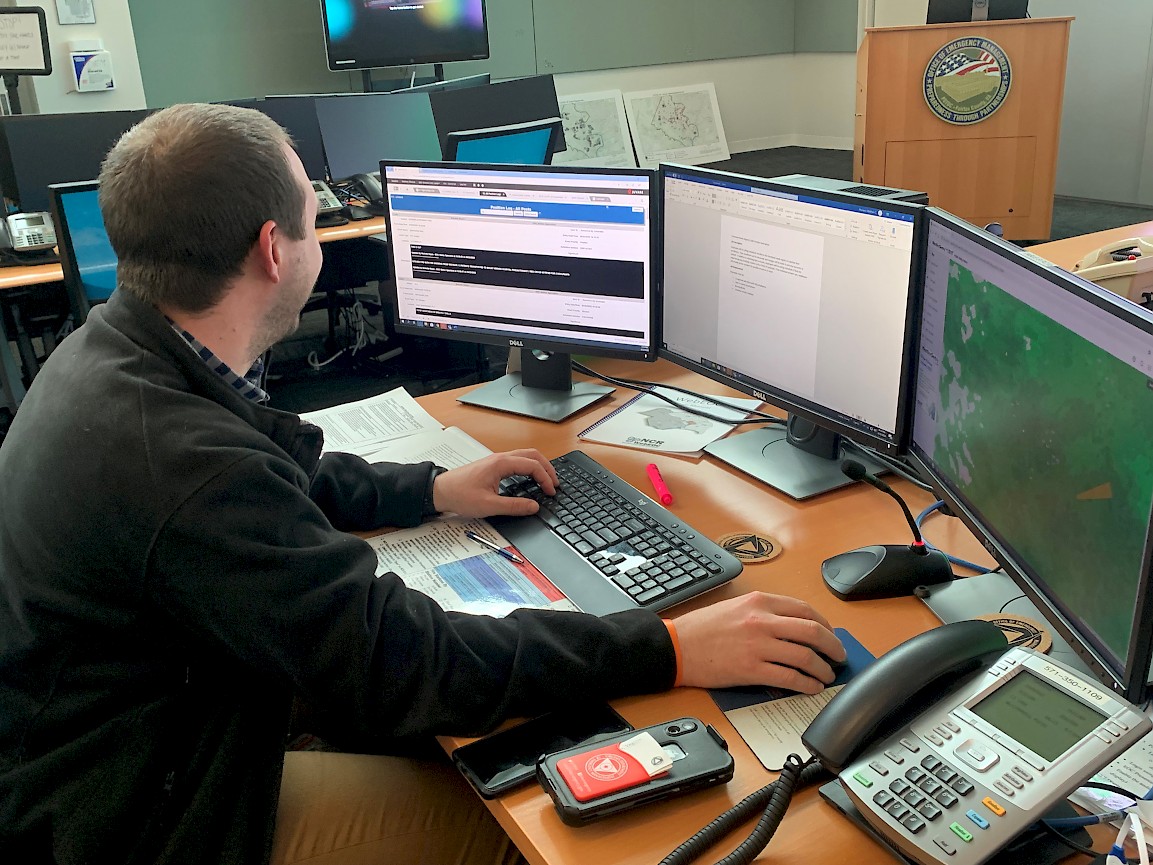The COVID-19 pandemic put many projects on hold and stalled efforts to build the workforce and train the next generation. Now that agencies are revisiting pre-pandemic projects, the Fairfax County Office of Emergency Management in Virginia offers a best practices approach for introducing internship programs and filling critical operational and resource gaps.
The Fairfax County Office of Emergency Management (OEM) in Virginia usually hosts one or two interns a semester, selecting them through a competitive interview selection process. The internship program is structured to help them take on actual projects with deliverables and cumulates in a final capstone project that is presented to the office on their last day. In addition to their projects and deliverables, the internship program is designed to give them exposure to all the different aspects of the emergency management office and field. They have a sit down with each of the divisions – Planning and Policy Analysis, Mission Support, Technical Services, Training and Exercises, Continuity of Operations Planning, and Community Engagement – to orient them early in the program. Then they learn, through trainings, meetings, and their projects, the different phases of emergency management and how a local government office operates in a large urban area. They also receive overall general career and professional development opportunities.
Lockdowns & Restarts
Due to the COVID-19 virus pandemic that brought lockdowns to Fairfax County and much of the world in March 2020, the office suspended the internship program until case transmission rates decreased and vaccination rates were at a relatively high rate. As things slowly started opening again in the spring and summer of 2021, it was decided to allow interns to support OEM again. OEM selected two interns for the summer 2021 session, one from an undergraduate Geographic Information System (GIS) program at Mary Washington University and a second from a graduate program from Penn State University’s online Masters of Homeland Security program. Interns typically work 20 hours a week in the office to ensure they have sufficient time to work on projects and attend meetings as needed.
Based on their career interests and the office project needs this summer, OEM assigned them projects related to training and exercise development, GIS map and tool building, Emergency Operations Center (EOC) guide documents, and their capstone project, which has significantly more requirements than their other assigned projects. To complete the capstone, the interns must work together to formulate a plan for completion, delegate the work among themselves (if there is more than one), coordinate with the relevant staff to ensure the deliverable will meet the needs, and then present on their methodology, research, lessons learned, and the product itself at the end of their semester session with the office.
Capstones, Projects & Guides
This summer’s capstone project was to transition the Multi-Year Training and Exercise Plan to a Multi-Year Integrated Preparedness Plan. The new integrated preparedness plan format would allow for more integration of the local planning and operational goals and objectives to help drive the training and exercises needed to prepare county staff and partners over the next several years. The two interns presented their process for developing and writing the plan, which they created from reviewing similar plans in the National Capital Region and other local emergency management programs across the United States.
They learned how to professionally format the document, suggested what elements to include and what did not work, what would need to be added to the plan in the future, and how to gather the information needed to develop it by collaborating with other staff in the office. The interns produced a nearly finalized plan. The Planning and Training and Exercise division staff will add the priorities and capabilities that need to be addressed with input from internal and external agency partners as part of the Integrated Preparedness Planning Workshop scheduled for Fall 2021.
As the COVID-19 pandemic response transitions to a mitigation and recovery effort, projects that were put on hold can resume, including internships.
In addition to their capstone project, the interns have also worked on creating and updating EOC placemats for at least twelve positions in the EOC, starting with EOC Command and General Staff positions, to help serve as quick reference guides for those working physically or virtually in the EOC. The placemats have an organizational chart, or a flow chart, on one side as an easy visual reference then several bullets of actions or decisions to make for each phase of the EOC activation shift. These placemats will be handy references for future activations.
Another project that will be helpful to businesses in Fairfax County is the business version of the Community Emergency Response Guide (CERG). The guide was designed to help residents, communities, and businesses be better prepared and even mitigate certain hazards that frequently affect Northern Virginia and the surrounding National Capital Region. The CERG and its associated templates – along with hazard webpages designed to help the public prepare for, mitigate, respond to, and recover from the hazard – are located on the Fairfax County website. The Business CERG is about 80% complete with the help of the interns and will be completed soon to share with the local Business Emergency Operations Council and other business leaders.
Future Plans
As the COVID-19 pandemic response transitions more to a mitigation and recovery effort in Fairfax County, OEM can resume projects that were put on hold. This will help develop internship projects for the next semester once the next set of interns are selected. The Planning and Policy Analysis Division is currently working on a new Alert and Warning Annex to supplement the Emergency Operations Plan and put an emphasis on equity.
Many of the OEM’s plans are currently being reviewed and potentially revised with more of an equity lens with help from partners to ensure the OEM is better able to address the needs for all residents. The next set of interns can provide a fresh take on topics rising to the top of the priorities list such as equity in all phases of emergency management, virtualization of the EOC and its functions, and impacts of climate change. In the future, the agency will incorporate more of that in all phases of emergency management and in the utilization of the funding received to support those efforts.

Sarah Keally
Sarah Keally has over 12 years’ experience in the emergency management field. She currently works for the Fairfax County Office of Emergency Management (OEM) as an emergency management technical specialist. She is the county’s WebEOC and Everbridge Alerting System administrator as well as responsible for many of technology solutions supporting the emergency management program and Emergency Operations Center (EOC). She currently serves as the National Capital Region WebEOC Subcommittee chair and advises the Metropolitan Washington Council of Governments (MWCOG) Emergency Managers Committee on the crisis information management needs for the region. She came from the Fairfax County Health Department Office of Emergency Preparedness where she spent four years as the emergency management specialist responsible for managing grants, logistics, communications, planning, responder health and safety, and as Duty Officer program. She has worked in public health emergency preparedness since 2008 and transitioned to emergency management in 2017.
- Sarah Keallyhttps://www.domesticpreparedness.com/author/sarah-keally






